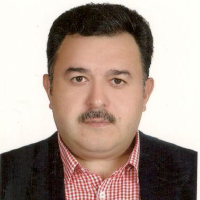Evaluation and determining the share of macro chemical fertilizers and soil properties in wheat (Triticum aestivum L.) yield gap using Boundary Line Analysis
One of the main problems of wheat production, especially in Golestan province, is the yield gap, which results from a significant difference between farmers' actual yield and obtainable yield. So, the aim of this study was evaluation and determining the share of macro chemical fertilizers and soil properties in wheat (Triticum aestivum L.) yield gap using Boundary Line Analysis.
This study was conducted in Kalaleh and in 60 farms based on Boundary Line Analysis in 2016-17. In this study, in order to analyze and measure the physicochemical properties of soil, after harvesting of autumn products, soil samples were collected from selected fields, and electrical conductivity, acidity, organic carbon percentage, total nitrogen content, available phosphorus, available potassium, clay, silt, sand as well as the soil texture class were investigated in vitro. The amount of grain delivered to the wheat shopping centers was recorded after determining the amount of drop as the final yield of the farm. All information about using base fertilizers and the other field operations were recorded. Using the boundary analysis method, the relationships between yield and variables were investigated, and finally, the wheat yield gap and the contribution of each of these factors in the creation of yield gap were estimated.
In the studied farms, minimum, maximum and average amount of nitrogen fertilizer were 34.5, 14.5 and 85.4 kg.ha-1, respectively. Also, the minimum, maximum and average grain yield of wheat in these fields were 1950, 4890 and 3227 kg.ha-1. The response of the most wheat yields in the studied farms in terms of nitrogen fertilizer consumption indicated that the points follow a two-part function. So, wheat nitrogen fertilizer increased to 58.35 kg.ha-1 and wheat grain yield did not have a stable trend. The yield of nitrogen was limited to 4848 kg.ha-1 obtained by consuming at least 58.35 kg of pure nitrogen, and in 20% of the studied farms, the amount of nitrogen consumed was out of optimum, and the yield loss due to the lack of optimum use of nitrogen fertilizer in the fields was 34.4% (1671.6 kg.ha-1). In other words, with the optimum use of nitrogen fertilizer, it is possible to increase wheat yield by 1671.6 kg ha-1. The results showed that there was a difference of 4071.7 kg.ha-1 (56%) between the achievable (7248 kg.ha-1) and actual yield (3417.4 kg.ha-1). The amount of absorbable phosphorus in the soil, the amount of absorbable potassium in the soil and the amount of nitrogen consumed caused wheat yield in the studied area, which was 14.9%, 14.3%, 11.7% and 10.3% percentage respectively.
In general, the use of boundary line analysis as a suitable method in this study has shown the desired effect of different factors on wheat yield gap. It seems that by modifying these limiting factors, the gap between actual yield and achievable yield can be reduced.
- حق عضویت دریافتی صرف حمایت از نشریات عضو و نگهداری، تکمیل و توسعه مگیران میشود.
- پرداخت حق اشتراک و دانلود مقالات اجازه بازنشر آن در سایر رسانههای چاپی و دیجیتال را به کاربر نمیدهد.


